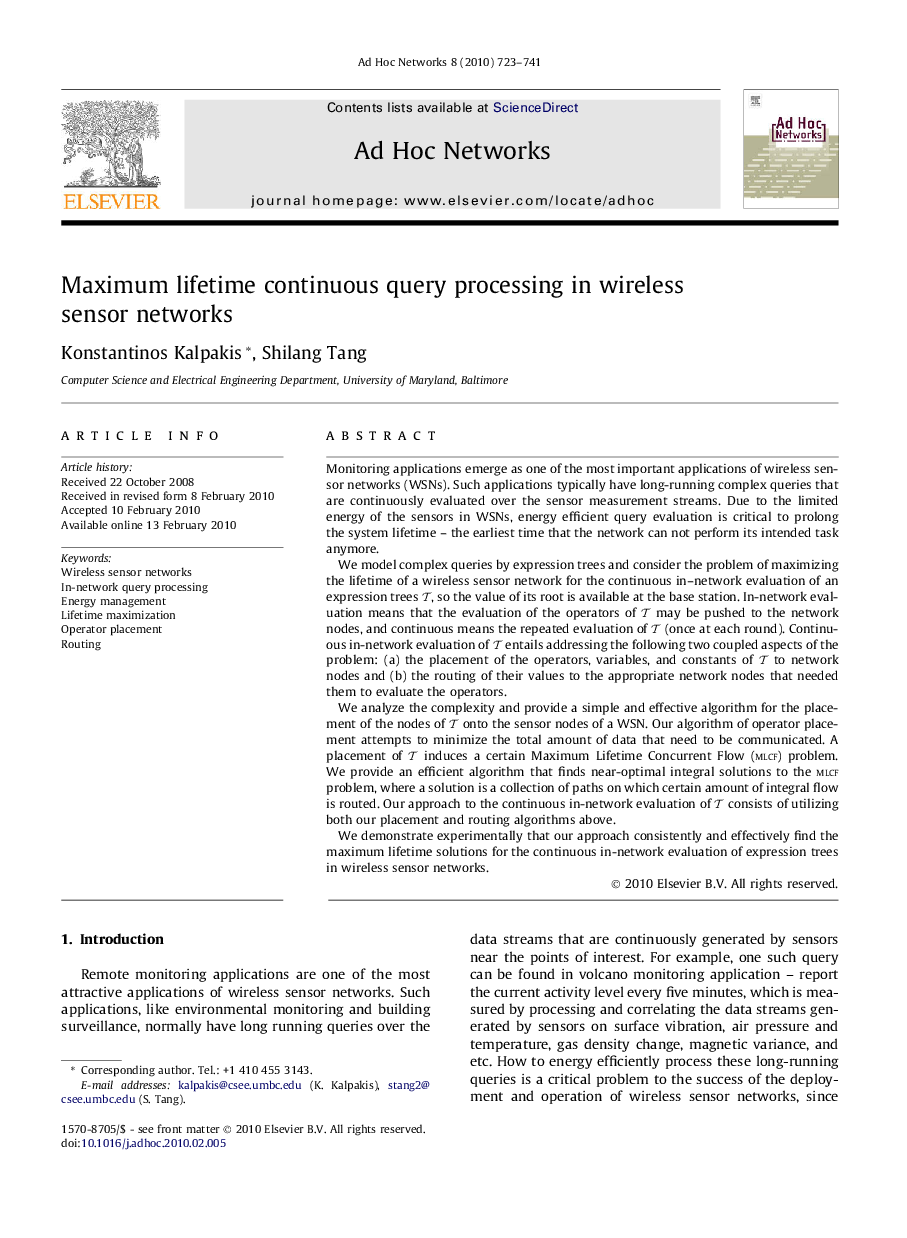| Article ID | Journal | Published Year | Pages | File Type |
|---|---|---|---|---|
| 444724 | Ad Hoc Networks | 2010 | 19 Pages |
Monitoring applications emerge as one of the most important applications of wireless sensor networks (WSNs). Such applications typically have long-running complex queries that are continuously evaluated over the sensor measurement streams. Due to the limited energy of the sensors in WSNs, energy efficient query evaluation is critical to prolong the system lifetime – the earliest time that the network can not perform its intended task anymore.We model complex queries by expression trees and consider the problem of maximizing the lifetime of a wireless sensor network for the continuous in–network evaluation of an expression trees TT, so the value of its root is available at the base station. In-network evaluation means that the evaluation of the operators of TT may be pushed to the network nodes, and continuous means the repeated evaluation of TT (once at each round). Continuous in-network evaluation of TT entails addressing the following two coupled aspects of the problem: (a) the placement of the operators, variables, and constants of TT to network nodes and (b) the routing of their values to the appropriate network nodes that needed them to evaluate the operators.We analyze the complexity and provide a simple and effective algorithm for the placement of the nodes of TT onto the sensor nodes of a WSN. Our algorithm of operator placement attempts to minimize the total amount of data that need to be communicated. A placement of TT induces a certain Maximum Lifetime Concurrent Flow (mlcf) problem. We provide an efficient algorithm that finds near-optimal integral solutions to the mlcf problem, where a solution is a collection of paths on which certain amount of integral flow is routed. Our approach to the continuous in-network evaluation of TT consists of utilizing both our placement and routing algorithms above.We demonstrate experimentally that our approach consistently and effectively find the maximum lifetime solutions for the continuous in-network evaluation of expression trees in wireless sensor networks.
